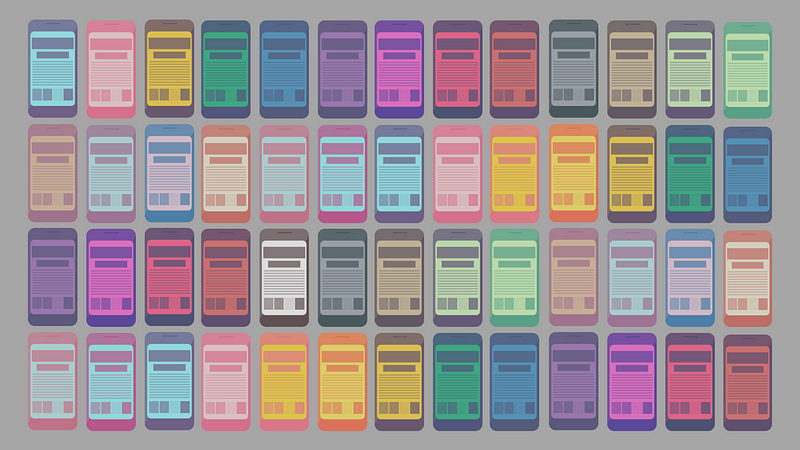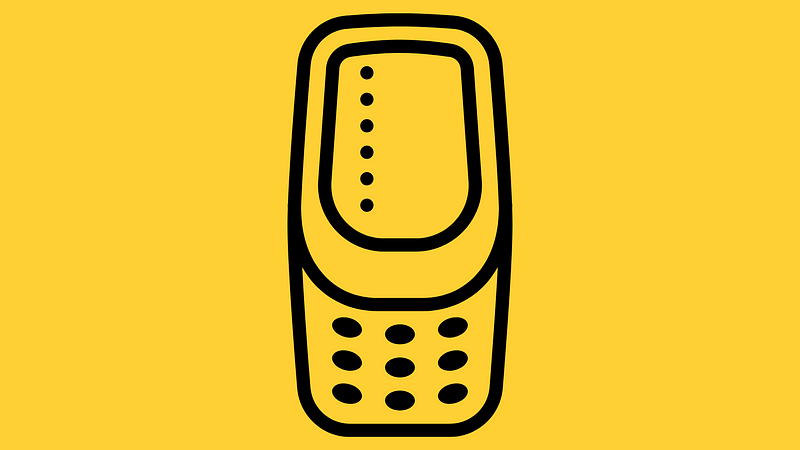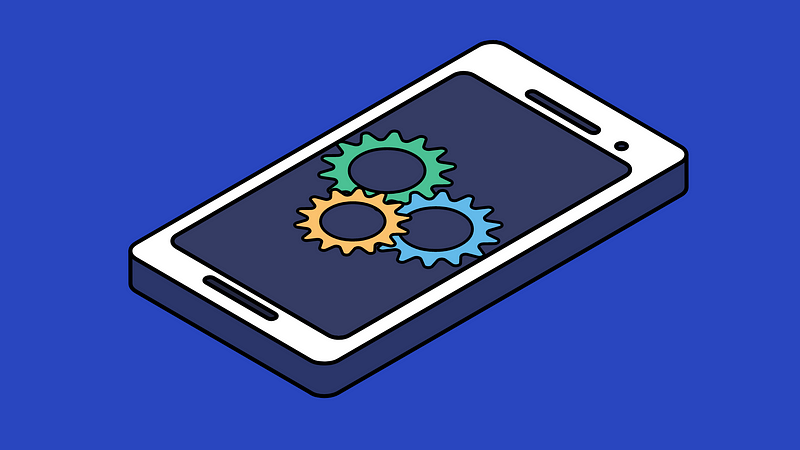# Embracing Disconnection: The Case for a Screen-Free Life
Written on
Chapter 1: The Allure of Disconnecting from Smartphones
In today's world, the negative effects of social media, screen addiction, and the yearning for a break from it all have become increasingly evident.

Recently, I found myself enjoying Aziz Ansari’s latest Netflix stand-up special, which was quite entertaining. Toward the conclusion of his performance, he pulled out a flip phone, a sight that felt shockingly out of place in 2022. His commentary on our society's obsession with screens resonated deeply, portraying the flip phone as an act of rebellion against this prevailing trend.
At first glance, the idea of swapping a smartphone for a retro device seems impractical. However, a closer examination reveals the significant societal effects smartphones have on our attention spans, availability, and interpersonal connections. This raises a compelling argument for choosing a device that doesn’t perpetually keep us plugged in. It also evokes the concept of reducing phone use for the sake of our mental health.
The Screen Time Challenge

In recent years, Apple and Google introduced the term "screen time," which refers to the amount of time we spend staring at our devices. This metric can serve as a sobering reminder of our attachment to technology, illustrating the dual nature of smartphones: highly useful yet equally addictive.
App developers have tailored their creations to exploit this addiction. Many mobile applications, particularly games, are designed for high engagement and repeated use. Social media platforms feature endless scrolling feeds that encourage users to keep returning. In essence, many modern apps are engineered to keep us fixated on our screens.
This scenario is particularly concerning for social media and content delivery platforms, which can foster toxicity and mental health issues. Research has identified the adverse effects of excessive social media use on the mental well-being of young adults, primarily facilitated through mobile applications. Over the past five years, I have observed numerous relationships deteriorate due to contentious posts on platforms like Facebook and Twitter.
Social media provides a false sense of security; users often feel protected by anonymity, allowing them to post without accountability. This exposure to a toxic environment can have dire consequences, including bullying and harassment. It’s no wonder that many individuals are considering stepping back from this digital landscape.
Exploring KaiOS as a Solution

One potential remedy for excessive screen time is to adopt a feature phone, like a modern flip or candy bar phone from brands such as Nokia or Alcatel. These devices promise to deliver essential functions while offering select internet tools through an operating system called KaiOS. KaiOS devices provide an experience reminiscent of pre-smartphone days while still allowing access to vital applications like Google Maps, WhatsApp, and YouTube.
KaiOS has thrived on contemporary flip phones and updated versions of classic models like the Nokia 6300 4G. As more individuals contemplate moving away from the overwhelming app stores of iOS and Android, there may be an opportunity to introduce additional form factors for this operating system. Given that users have grown accustomed to touchscreen devices, a full touchscreen KaiOS model with a minimalist approach could appeal to those seeking a less intrusive mobile experience.
The introduction of such devices could validate KaiOS as a practical solution for those experiencing smartphone fatigue, providing a familiar interface that eases the transition.
Creating a Minimalist Home Screen Experience

Another way to alleviate digital stress is to optimize our current smartphones, the very source of our distractions. Modern Android and iPhone devices often suffer from an overload of preinstalled applications and constant notifications demanding attention. Fortunately, users can make adjustments to reduce these distractions.
One strategy is to redesign the home screen to limit distractions. Android users have long enjoyed customization options, while iPhones received improvements with the introduction of the App Library in iOS 14, allowing users to streamline their home screens by displaying only essential apps and widgets.
Android also offers the ability to replace app icons with minimalist text representations, which can help reduce visual distractions and promote more intentional app usage. These minimalist launchers create a simplified aesthetic that discourages mindless app usage.
Managing notifications is another effective way to create a less distracting smartphone experience. Both Android and iOS provide tools to customize notification settings, allowing users to choose which applications can send alerts and which cannot. While these features exist, they often remain underutilized since promoting limited phone usage is not in the best interest of manufacturers.
The Question of Minimalism in a Digital Age

So, why does the prevalence of distracting apps lead many to seek minimalist home screens or abandon smartphones altogether? The toxic atmosphere that has permeated social media platforms is a significant concern. The spread of misinformation, harmful narratives, and dangerous rhetoric has become the norm rather than the exception. Many individuals now rely on social media for news, exacerbating this precarious cycle.
Given how smartphones have become conduits for endless scrolling and agitation, it’s understandable that some may wish to regain control over their digital lives. As more people express a desire to escape this reality, alternatives like KaiOS may gain traction. However, this is merely a temporary fix to a larger issue: our addiction to platforms that prioritize engagement over well-being.
Today, we spend a staggering amount of time on our screens, often at the expense of our quality of life. As cameras and displays improve, our focus has shifted toward them, diminishing our intentionality in living. While switching to a flip phone may seem extreme, perhaps radical changes are necessary as our society continues to evolve into a more stressful digital landscape.
Ultimately, embracing simplicity might be the key to reclaiming our sanity in this screen-dominated age.
The first video titled "Pinterest Account Suspended Tips - YouTube" offers valuable insights on how to navigate the challenges of suspended accounts on this popular platform, providing practical solutions for users.
The second video titled "It's Not You. Phones Are Designed to Be Addicting - YouTube" explores the inherent design features of smartphones that foster dependency, shedding light on the psychological impact of constant connectivity.